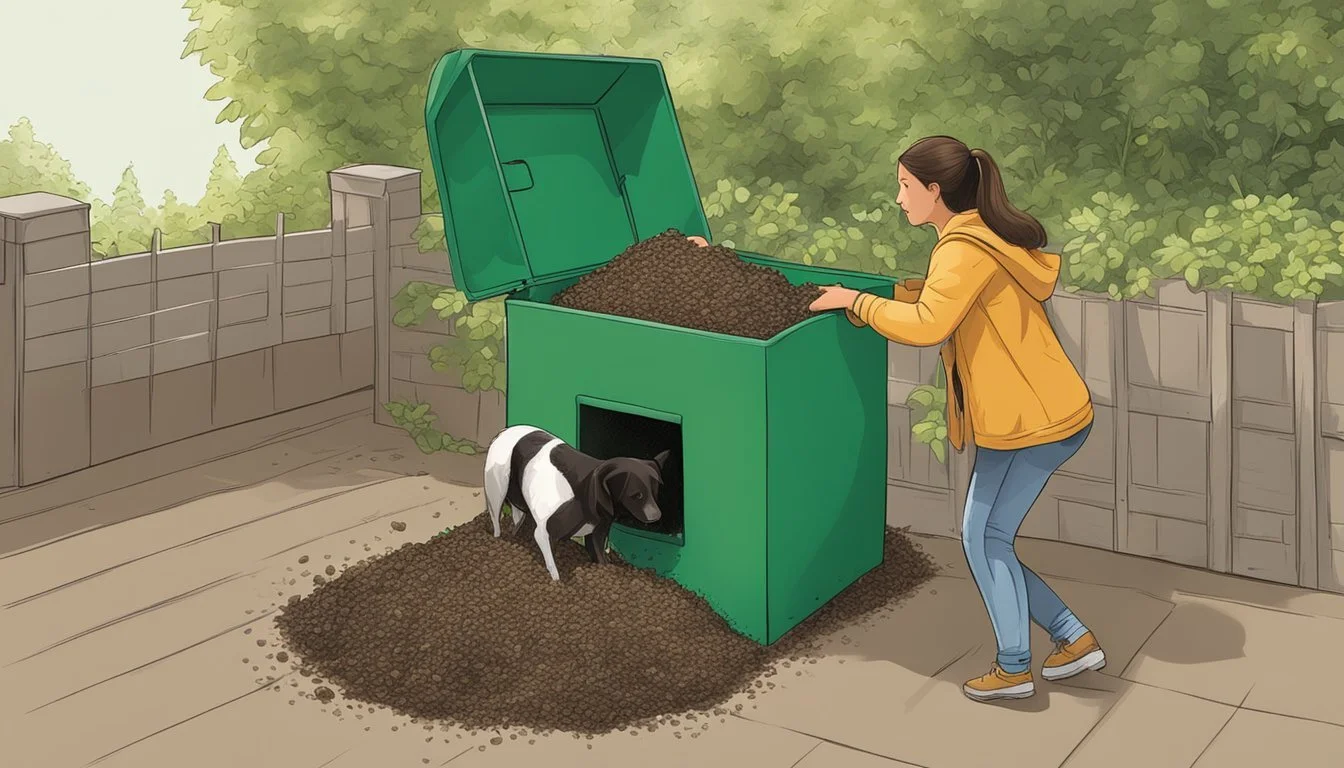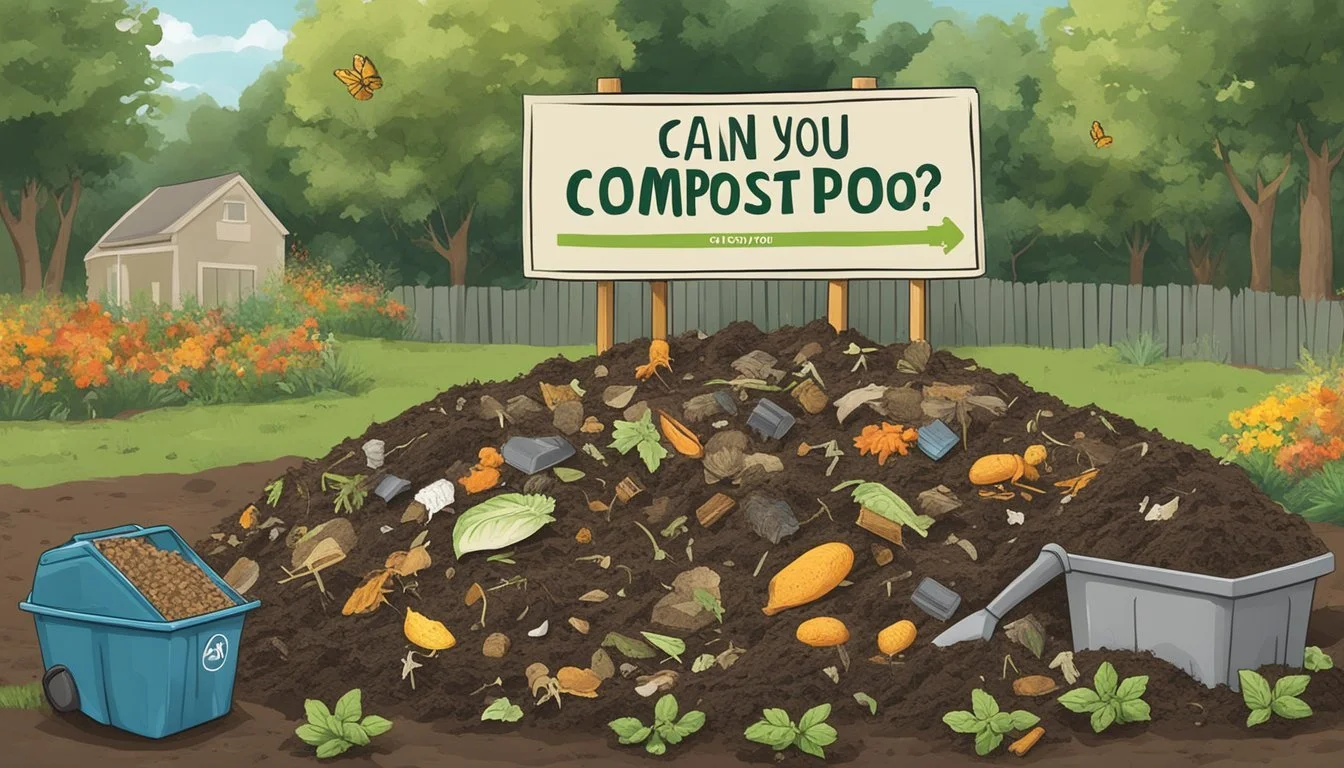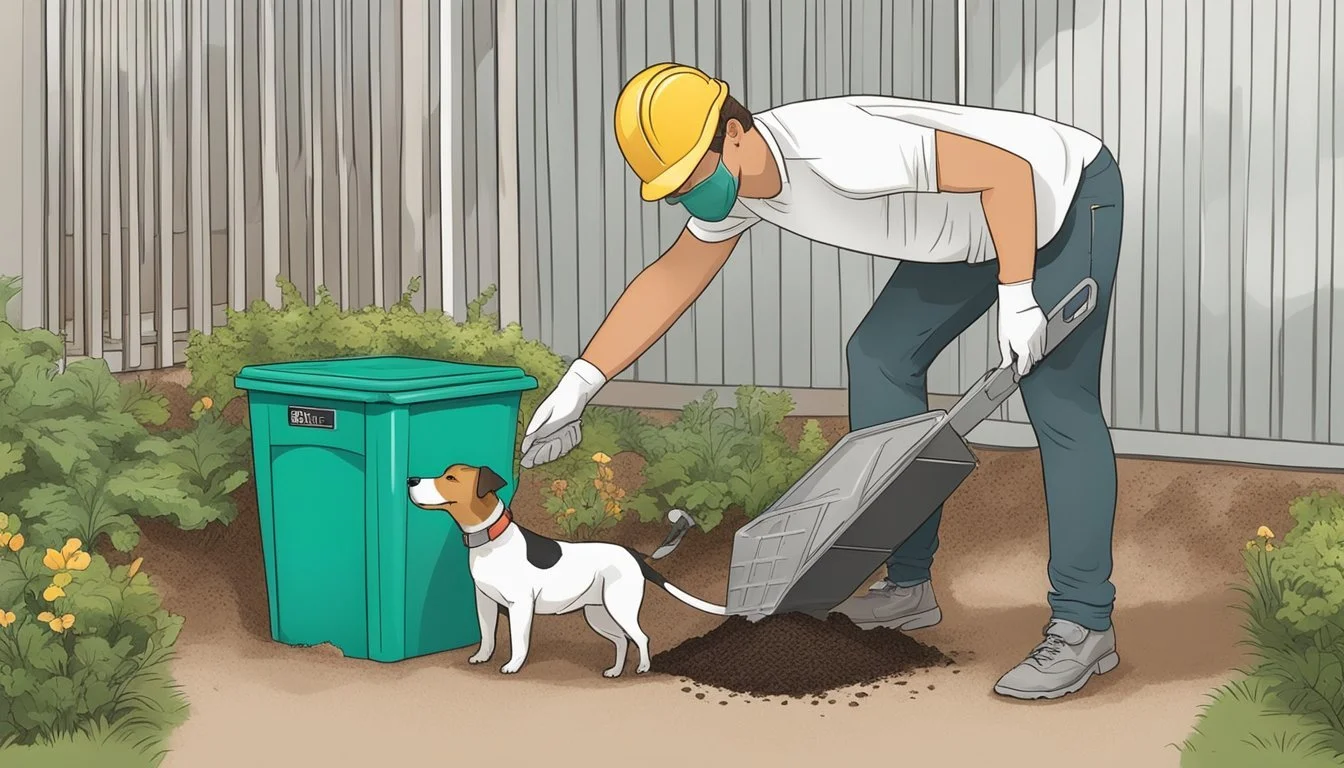Can You Compost Dog Poo?
Unveiling the Do's and Don'ts
Composting is a process where organic waste decomposes naturally, turning into a nutrient-rich soil amendment beneficial for gardening. The concept of composting typically involves plant-based materials; however, pet owners often wonder whether dog poop can enter this cycle as well. While the initial thought of adding dog waste to compost may cause hesitation, it's an environmentally conscious option worth exploring. Proper composting methods can potentially handle dog feces, transforming it into useable compost over time.
The composting of dog waste involves more complexity than that of fruit peels or lawn clippings. Dog feces may contain pathogens that can be harmful to humans and plants if not composted correctly. Therefore, it's crucial to approach the composting of dog poop with care, ensuring the process is done safely. Specific conditions are required for dog waste to break down effectively and mitigate the potential health risks associated with pathogens in the poop.
For environmentally-minded dog owners, composting dog waste represents a sustainable alternative to sending it to a landfill. Utilizing the right composting techniques, they can reduce their environmental footprint while creating a useful product for non-edible plants. However, it's important to note that not all composting systems are suitable for this purpose, and it's advised to use a separate composting setup dedicated to pet waste.
Understanding Composting Basics
Before diving into the details of composting dog poo, one must grasp the key components and principles of the composting process. This involves understanding how organic materials break down, the balance between carbon and nitrogen, and the role of microorganisms.
Composting Process and Principles
Composting is a biological process where microorganisms, including bacteria and fungi, break down organic materials into simpler forms. These materials undergo decomposition, resulting in a nutrient-rich substance known as compost. The fundamental principles rely on maintaining the right balance of moisture, aeration, carbon-rich materials, and nitrogen-rich materials to support the microorganisms that facilitate composting.
Components of Compost: Carbon and Nitrogen
The two essential components required for effective composting are carbon and nitrogen. Often referred to as "browns" and "greens," respectively, they provide energy and protein to the microorganisms.
Carbon sources include:
Leaves
Straw
Wood chips
Paper
Nitrogen sources involve:
Food scraps
Grass clippings
Manure
A general rule for balancing these is to use a brown ratio of about 30:1 by volume to ensure optimal decomposition.
The Role of Microorganisms in Composting
Microorganisms play the pivotal role in breaking down organic material into compost. They require adequate aeration, sufficient moisture, and a balanced diet of carbon and nitrogen to thrive. As these microbes consume organic matter, they generate heat, which helps to further break down compostable materials and destroy pathogens. The byproduct of this activity is high-quality compost that can enhance soil health.
Dog Poop as Waste
Dog poop, or canine feces, is a type of waste that comes with health risks and challenges in composting, contrasting with other animal manures typically used in composting processes.
Potential Health Risks of Dog Waste
Dog waste harbors parasites and pathogens that can pose significant health risks to humans and other animals. One of the primary concerns is the presence of Toxocara canis, the parasite responsible for roundworms in dogs, which can cause serious illness if transmitted to humans. Other concerns include:
E. coli: A bacterium that can cause gastrointestinal illness.
Giardia: A protozoan parasite that leads to diarrhea and other digestive issues.
Comparing Dog Waste to Other Manures
Unlike the manure of herbivores like cows and horses, dog waste is not generally recommended for composting due to its composition and the carnivorous diet of dogs. Here's a comparison:
Animal Diet Type Compost Safety Nutrient Contents Dog Carnivorous Less safe Higher in pathogens Cow Herbivorous Safer Rich in nutrients, lower in pathogens
Dog manure is richer in pathogens due to the dog's diet and thus requires more careful management when considering composting.
Challenges in Composting Dog Poop
Composting dog poop involves overcoming challenges to ensure the compost is safe for use. The key challenges include:
Pathogen Destruction: Ensuring high temperatures to kill harmful organisms.
Time: Allowing a sufficiently long degradation period to ensure safety.
Separation: Keeping dog poop compost separate from regular compost to avoid cross-contamination.
Setting Up a Dog Poop Compost System
Creating a designated system for composting dog poop helps in minimizing waste and benefiting the environment. It requires choosing an appropriate location, selecting the right type of composter, and balancing materials for efficient breakdown.
Choosing the Right Location for Compost Pile
The site for a dog poop compost pile should be discrete, away from living areas, and should not be prone to flooding. It must also be moderately shaded to prevent excessive drying while maintaining accessibility for regular additions and maintenance.
Types of Composting Systems for Dog Poop
There are various composting systems suitable for dog poop, each with its benefits.
Pet Waste Digesters
Buried underground
Use enzymes to breakdown waste
Compost Bins
Can be self-made or commercially purchased
Should be durable and allow for aeration
Materials to Include with Dog Poop for Effective Composting
For successful composting, dog poop should be mixed with carbon-rich materials to balance the nitrogen-rich waste. This includes:
Sawdust: Moderate quantities help to absorb moisture.
Leaves and Shredded Newspaper: These items add bulk to the pile.
Bulking Agents: Promote airflow and speed up the composting process.
One should be mindful that the compost produced through this process should not be used on edible plants to avoid health risks.
Maintaining Your Compost Pile
Maintaining a compost pile requires careful monitoring and adjustments to create the right balance for efficient decomposition. Attention must be given to temperature, moisture, and aeration, which are vital for transforming dog waste into usable compost.
Optimizing Temperature and Moisture Levels
The temperature within a compost pile should ideally be between 135˚F to 160˚F. This range is essential for promoting the activity of thermophilic bacteria, which expedite the composting process. One should use a compost thermometer to regularly check the pile's temperature. Moisture is equally important, as the pile should feel like a “wrung-out sponge,” suggesting a moisture content of about 40% to 60%. Excess water should be avoided, as it can lead to an anaerobic condition, slowing down decomposition.
Temperature check: Use a compost thermometer to monitor.
Ideal range: Maintain 135˚F to 160˚F for hot composting.
Moisture content: Aim for 40%-60%.
Turning and Aeration
Aeration is critical to introduce oxygen, which microorganisms require to break down dog waste. Turning the compost pile every few weeks ensures even aeration throughout the pile. This process helps to release heat and gases, redistribute moisture, and incorporate new material into the thermophilic center.
Frequency: Turn the pile every two to four weeks.
Method: Ensure thorough mixing to aerate all areas.
Monitoring for Proper Decomposition
A well-maintained compost pile will exhibit signs of proper decomposition such as a reduction in volume, darkening of the material, and an earthy smell. If the pile is too dry or has an ammonia-like odor, it may suggest an imbalance that needs correcting. One should adjust water and aeration levels accordingly and continue to monitor using a compost thermometer to ensure the pile remains within the ideal temperature range.
Signs of success: Volume reduction, dark color, earthy odor.
Imbalance indicators: Dryness or ammonia smell.
Monitoring tools: Regular use of a compost thermometer.
Safety and Health Guidelines
When composting dog poo, one must adhere to stringent safety and health guidelines to minimize the risk of transmitting parasites and pathogens, and to ensure the resulting compost does not harm plants, soil, or human health.
Protecting Against Parasites and Pathogens
To safeguard against the transmission of parasites like roundworms or pathogens such as Salmonella and fecal coliform bacteria, composting dog poo requires maintaining a sustained high temperature. The USDA guidelines suggest reaching at least 165 degrees Fahrenheit for a minimum of five consecutive days to effectively kill harmful organisms. Always wear gloves when handling waste and wash hands thoroughly afterwards to avoid contaminating oneself or others.
Ensuring Compost is Safe for Plants and Soil
The compost must decompose properly to avoid any negative impact on plants and soil. Regularly aerate the compost to maintain oxygen levels and turn the pile to ensure even decomposition. It's crucial to confirm that the compost has no remaining pathogens before use. One should only apply the finished compost to ornamental plants and non-edible vegetation to prevent the transmission of any residual pathogens that could affect plant health or soil quality.
Preclude Use in Vegetable Gardens and With Edible Plants
It is strongly recommended to not use dog poo compost in vegetable gardens or with any edible plants because of the potential health risks, including the possibility of contaminating groundwater. Children, in particular, are at risk, as they may come into contact with the soil and inadvertently ingest harmful organisms. Always label compost containing dog poo and store it away from compost intended for edible garden use.
Final Product and Usage
In transforming dog poo into compost, the final product should be a nutrient-rich, soil-like amendment that is both beneficial to ornamental plant life and environmentally responsible. The successful conversion requires understanding when the compost is mature and knowing the safest ways to use it, taking into account its origin as pet waste.
Recognizing Mature Compost
Mature compost will have a crumbly texture, dark color, and an earthy smell, devoid of the original waste odor. It should be free of any recognizable dog waste and should not attract insects or pests. This indicates that the organic matter has fully broken down and the nutrients have been sufficiently processed, making it safe for use in gardening, particularly for ornamental plants, shrubs, and trees.
How to Utilize Your Dog Waste Compost
The mature compost can serve as a potent fertilizer or soil amendment. To use, it should be mixed into the soil at the base of the plants, aiding in nutrient provision and soil structure improvement. However, one should avoid using this compost on plants intended for human consumption due to the pathogens that might have been present in the dog poo.
Restrictions on Dog Poop Compost Application
Dog waste compost should be applied with caution due to the potential for harmful pathogens. It is best utilized for non-edible plants to eliminate any risk of contamination. The compost should be thoroughly cured and must never be used fresh to ensure safety. Also, keep in mind that while this compost is beneficial, it is not a complete substitute for all organic waste composting and should be used in conjunction with other compost inputs for a balanced garden ecosystem.
Environmental Considerations
Composting dog poo offers both a reduction in organic waste sent to landfills and a method for ecologically sound pet waste disposal. These benefits are significant when considering the environmental footprint of pet ownership.
Reducing Waste and Impact on Landfills
Every year, pets produce a substantial amount of waste, much of which ends up in municipal landfills. Composting dog poo serves as an eco-friendly alternative, cutting down the volume of organic waste and extending the lifespan of landfills. By diverting this waste from landfills, composting also lessens the release of harmful greenhouse gases, particularly methane, that result from organic matter decomposition under anaerobic landfill conditions.
Ecologically Responsible Pet Waste Disposal
When it comes to pet waste disposal, it's essential to consider the environmental impact. Composting dog poo allows the organic material to be repurposed into nutrient-rich compost that can benefit gardening endeavors, contributing to soil health and plant growth. This method ensures that pet waste is managed in a manner that aligns with a sustainable lifestyle, reducing the ecological footprint of pet care. It is crucial, however, to adhere to safe composting practices to avoid any potential health risks associated with pathogens commonly found in dog waste.





